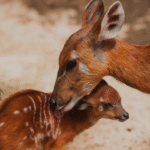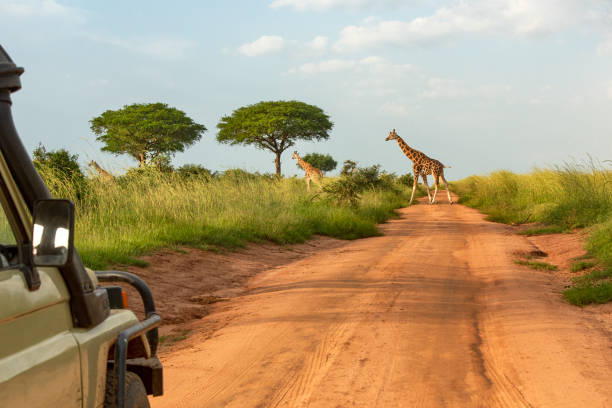
ADVENTURE SAFARIS IN UGANDA: EXPLORING THE PEARL OF AFRICA’S WILD HEART
Introduction
Uganda, famously known as the “Pearl of Africa,” is a premier destination for adventure safaris, offering breathtaking landscapes, diverse wildlife, and thrilling activities that captivate visitors from around the globe. Unlike traditional safaris focused solely on game drives, adventure safaris in Uganda masterfully combine wildlife viewing with adrenaline-pumping experiences, creating an unparalleled outdoor adventure. From tracking endangered mountain gorillas in misty rainforests to rafting the Nile’s roaring rapids, Uganda’s rich biodiversity and varied terrain provide the perfect backdrop for unforgettable expeditions.
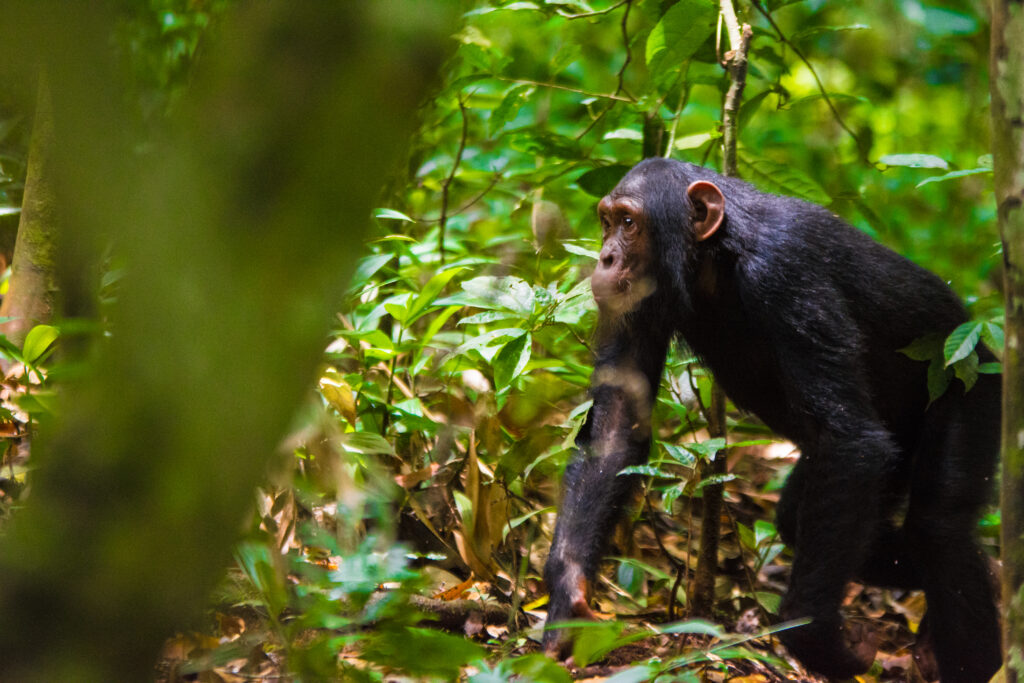
This article explores Uganda’s top adventure safari destinations, the best times to visit, complementary activities, and why this East African gem continues to attract thrill-seekers and nature lovers alike. We’ll also examine the challenges facing the sector and how sustainable tourism initiatives aim to preserve Uganda’s natural wonders for future generations.
Where Are Adventure Safaris Done in Uganda?
Adventure safaris in Uganda unfold across a variety of landscapes, from savannah plains and dense rainforests to mist-covered mountains and the powerful Nile River.
These safaris are not confined to a single type of experience but span a wide range of activities from classic game drives and primate trekking to mountain climbing, white-water rafting, and cultural encounters. Whether deep in a national park or along the country’s iconic waterways, Uganda offers an expansive stage for adventurers seeking both thrilling moments and meaningful immersion in nature and culture.
Queen Elizabeth National Park
Famous for its tree-climbing lions and the Kazinga Channel, this park blends classic game drives with boat safaris. Visitors can also track chimpanzees in Kyambura Gorge or embark on guided nature walks through the savannah and crater lakes. The park’s diverse habitats, including wetlands and forests, make it one of Uganda’s most biodiverse regions, hosting over 600 bird species and 95 mammal species.
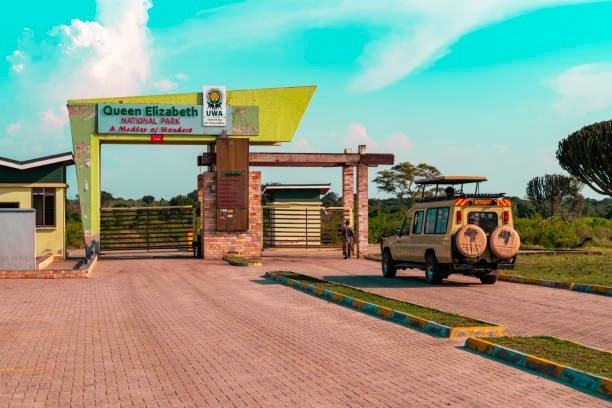
Murchison Falls National Park
Home to the spectacular Murchison Falls, where the Nile River forces itself through a narrow gorge, this park offers Nile River cruises, Big Five game drives (rhinos exclusive), and exceptional birdwatching. The Budongo Forest section is ideal for chimpanzee trekking, while the delta area provides prime spots for spotting shoebill storks.

Bwindi Impenetrable National Park
A UNESCO World Heritage Site, Bwindi is home to nearly half of the world’s mountain gorillas. Gorilla trekking here is a bucket-list experience, with treks ranging from 2 to 8 hours through dense rainforest. The park also offers community walks with the Batwa pygmies, providing insights into their traditional forest lifestyle.
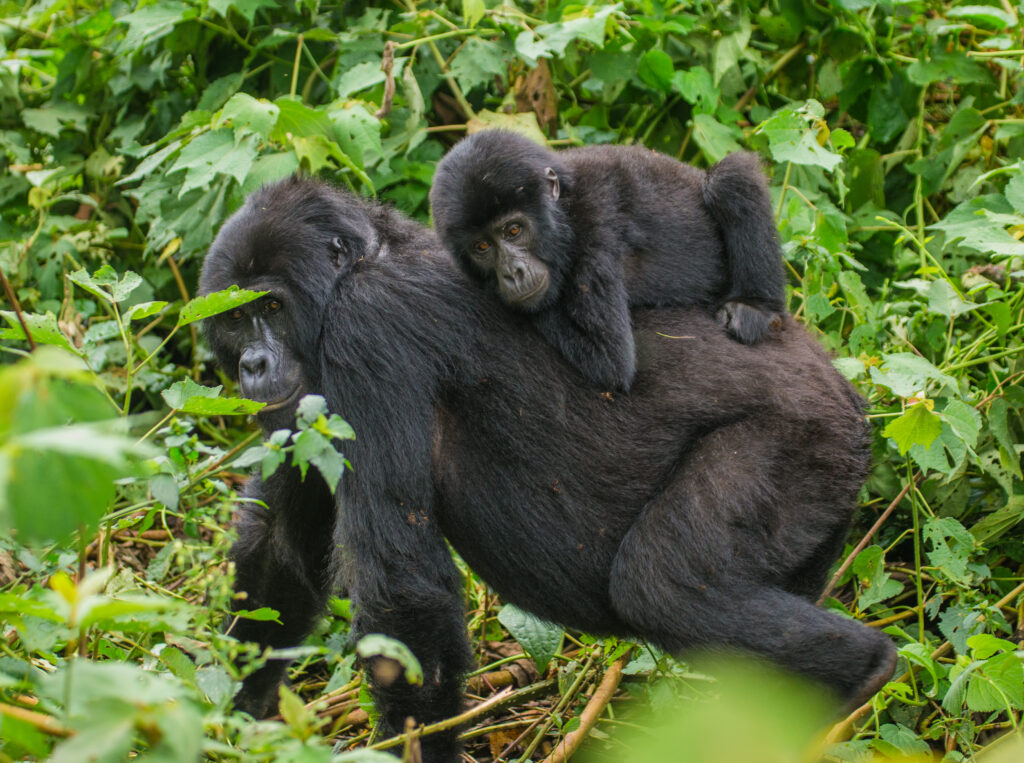
Kidepo Valley National Park
Uganda’s most remote park boasts rugged savannahs, unique wildlife like the cheetah and ostrich, and cultural encounters with the Karamojong people. Its isolation ensures an exclusive safari experience, with dramatic landscapes reminiscent of classic East African wilderness.
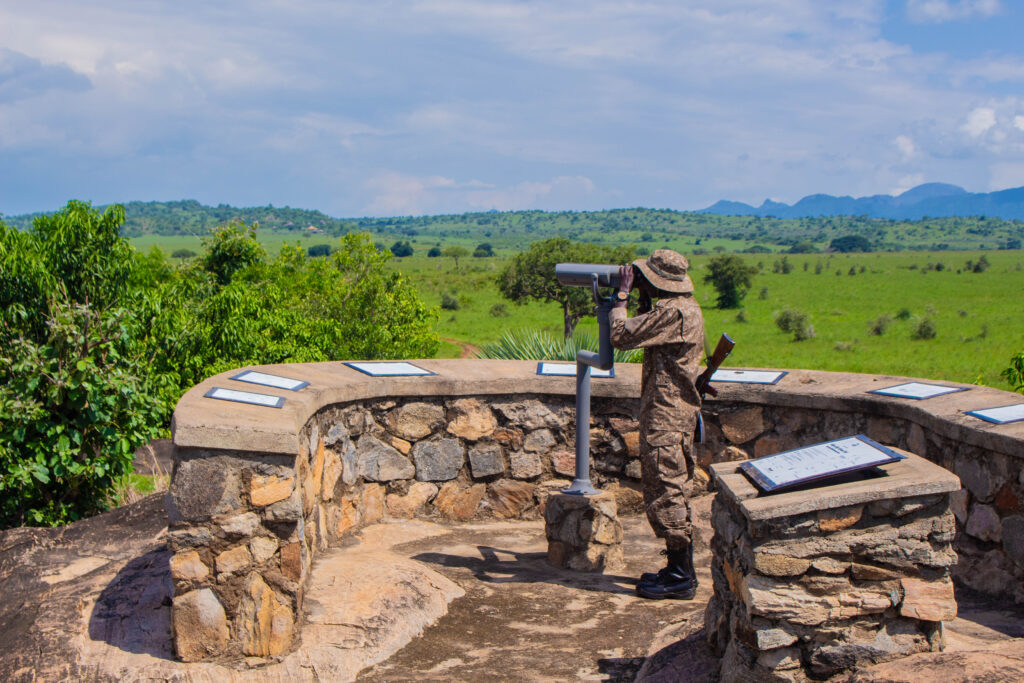
Lake Mburo National Park
The only park where horseback safaris and night game drives are permitted, Lake Mburo is a haven for zebras, impalas, and hippos. Walking safaris here offer intimate wildlife encounters, and the park’s compact size makes it an ideal destination for short visits.

Rwenzori Mountains National Park
Dubbed the “Mountains of the Moon,” the Rwenzoris feature glacier-capped peaks and multi-day treks for adventurous hikers. The Central Circuit Trail is a highlight for mountaineers, offering challenging routes through alpine meadows and equatorial snow.

Semuliki National Park
Known for its therapeutic hot springs and a unique Central African rainforest ecosystem, Semuliki offers exceptional birdwatching and primate-tracking opportunities. The park is home to rare species like the pygmy antelope and forest elephants.
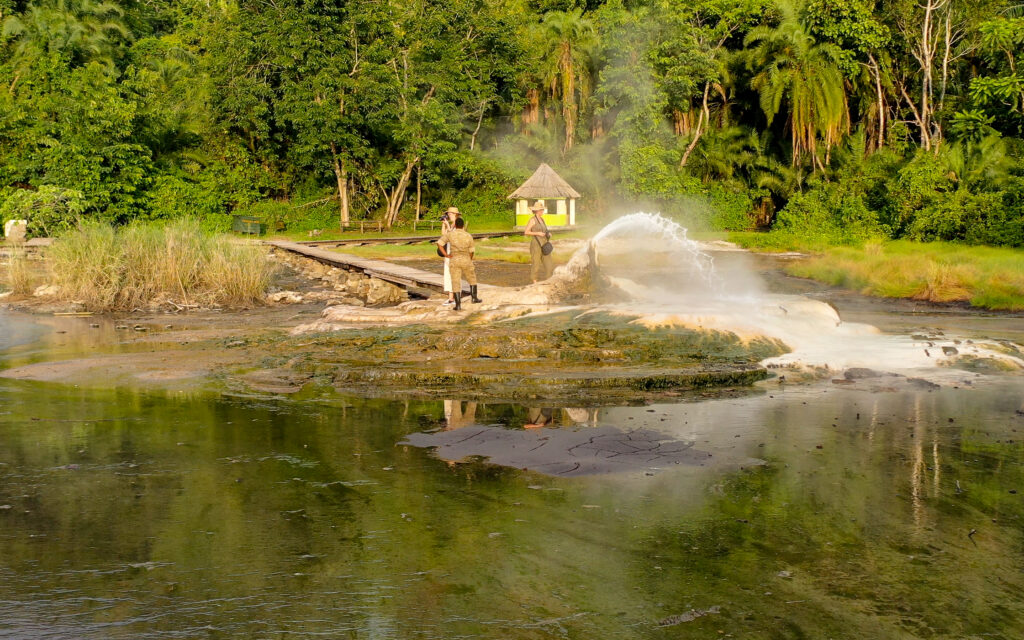
Mgahinga Gorilla National Park
Mgahinga Gorilla National Park, part of the scenic Virunga Mountains, is a remarkable destination for tracking mountain gorillas in their natural rainforest habitat. Guided treks offer the rare chance to spend an hour observing these majestic creatures up close as they interact within their family groups, a profound experience found in only a few places on Earth.
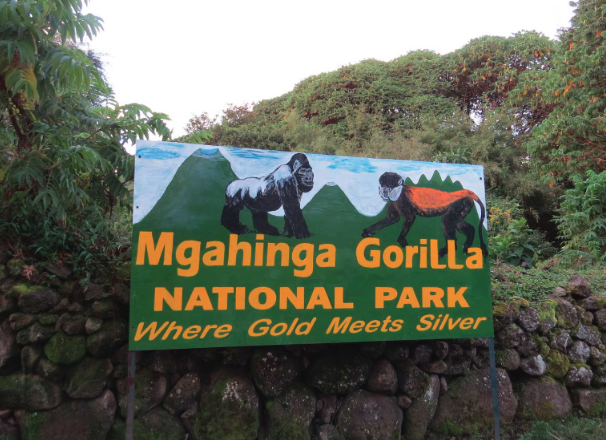
The park also features golden monkey tracking, challenging hikes up volcanic peaks like Mount Gahinga with stunning views, and the culturally immersive Batwa Trail, which offers valuable insights into the traditional forest life of the indigenous Batwa people.
Kibale Forest National Park
Kibale Forest National Park, Uganda’s primate paradise, offers an unparalleled opportunity to track our closest genetic relatives, chimpanzees, through its dense canopy. Morning expeditions reveal lively chimpanzee communities swinging through the trees, grooming, and calling to one another, while full-day habituation experiences provide deeper insight into their complex social structures.
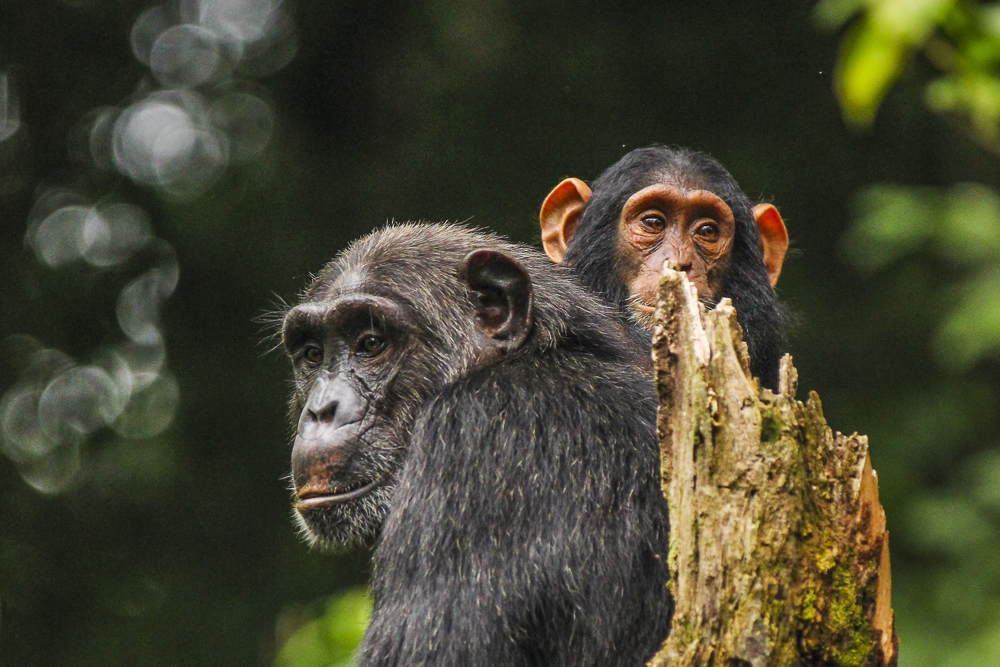
Beyond chimpanzees, the park is a haven for primate diversity, featuring golden monkeys in bamboo thickets, acrobatic colobus monkeys with flowing white tails, and rare L’Hoest’s monkeys. This rich variety makes Uganda a premier destination for intimate, close-up encounters with primates, far beyond just gorillas and chimps.
Source of the Nile
Jinja, home to the legendary Source of the Nile, offers a diverse range of water-based adventures against a backdrop of stunning riverside scenery. Thrill-seekers can tackle the Nile’s powerful Grade 5 rapids, such as “The Bad Place,” through whitewater rafting or test their skills kayaking through challenging currents. For a different kind of excitement, bungee jumping and high-speed jet boat rides provide an adrenaline rush. Those seeking relaxation can enjoy serene sunset cruises or peaceful stand-up paddleboarding along the calmer stretches of the river, which are rich in birdlife.
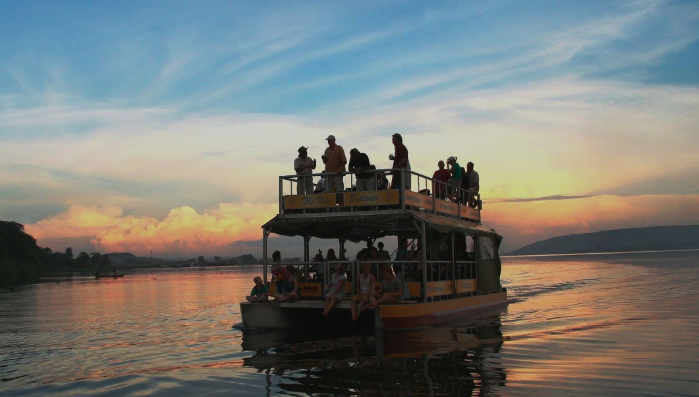
Busowoko Falls
Tucked away just 21 km from Jinja, Busowoko Falls offers adventure enthusiasts an exhilarating mix of white-water tubing through natural rapids, heart-pounding cliff jumping, and refreshing natural pool dips all in a spectacular waterfall setting far from the usual tourist crowds. The falls come alive between December-February and September when drier conditions create perfect water levels for safe yet exciting adventures, while the surrounding area teems with birdlife, including African darters and ospreys nesting along the riverbanks.

This hidden adventure spot offers an authentic Ugandan experience, where visitors can challenge themselves on the rapids by day and then relax under the falls’ natural cascades by afternoon, all at a fraction of the cost of more commercialized attractions. The falls’ combination of adrenaline activities and pristine natural beauty makes it a must-visit for those seeking adventure beyond Jinja’s better-known offerings.
Griffin Falls in Mabira Forest
A short 30-minute hike through lush rainforest reveals the stunning Griffin Falls, where visitors can combine waterfall exploration with thrilling canopy walks on East Africa’s longest zip line. The surrounding Mabira Forest offers excellent mountain biking trails buzzing with monkey sightings and birdwatching opportunities, while community-run eco-tours ensure tourism directly benefits local conservation and social projects, making it perfect for nature enthusiasts seeking softer adventures with meaningful impact.

Best visited year-round, this easily accessible forest escape delivers adventure, wildlife encounters, and cultural immersion just hours from Uganda’s urban centers.
Sezibwa Falls
Sezibwa Falls, just 35 km from Kampala, blends adventure and legend in a setting steeped in cultural significance. The falls are believed to have been born from a woman, Nakangu Tebatuusa, who gave birth to twin streams, Sezibwa and Bwanda, making it a sacred site in Buganda tradition. Visitors can enjoy rock climbing, abseiling, and forest nature walks with monkey sightings, all while learning about the traditional oral stories passed down through generations. Local guides share these ancestral tales, often involving spirits and blessings, offering a deeper connection to the landscape and its enduring spiritual heritage.
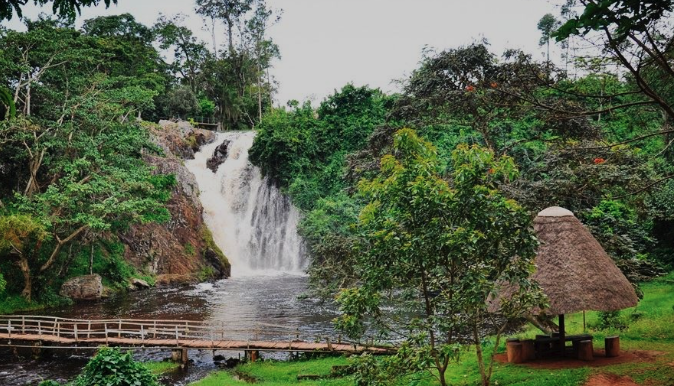
Hiking & Mountain Climbing Adventures
Uganda offers world-class trekking experiences, from the glacier-capped Rwenzoris (“Mountains of the Moon”), requiring multi-day expeditions, to Mount Elgon’s dramatic crater hikes and waterfalls, which are perfect for adventurers seeking high-altitude challenges amidst breathtaking scenery.
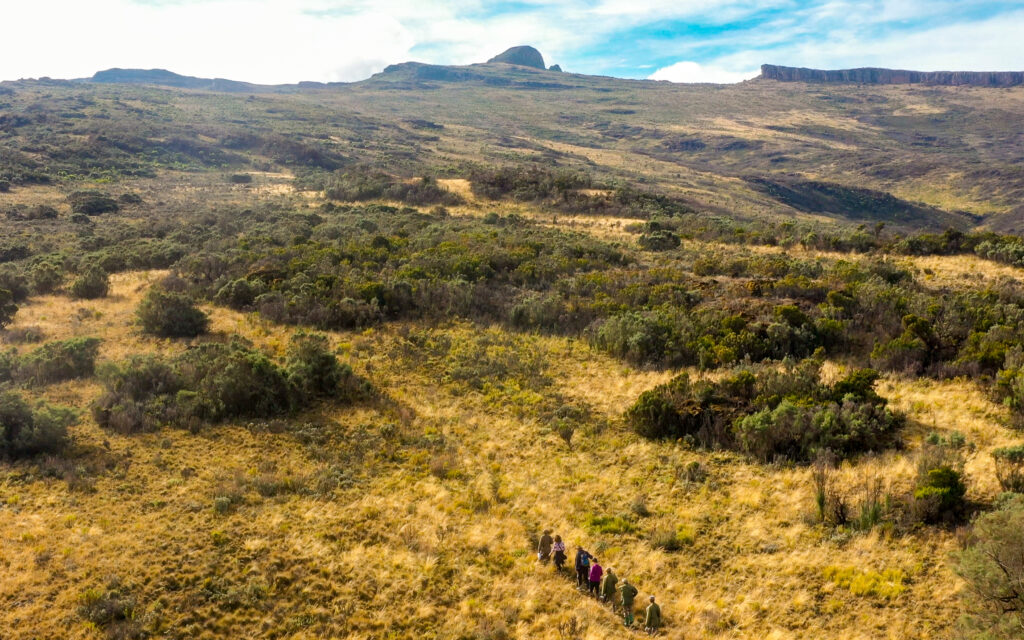
Authentic Cultural Immersions
The Batwa Trail provides rare insights into indigenous forest lifestyles through interactive experiences, while visits to Karamojong manyattas showcase semi-nomadic traditions, adding profound cultural depth to adventure itineraries.
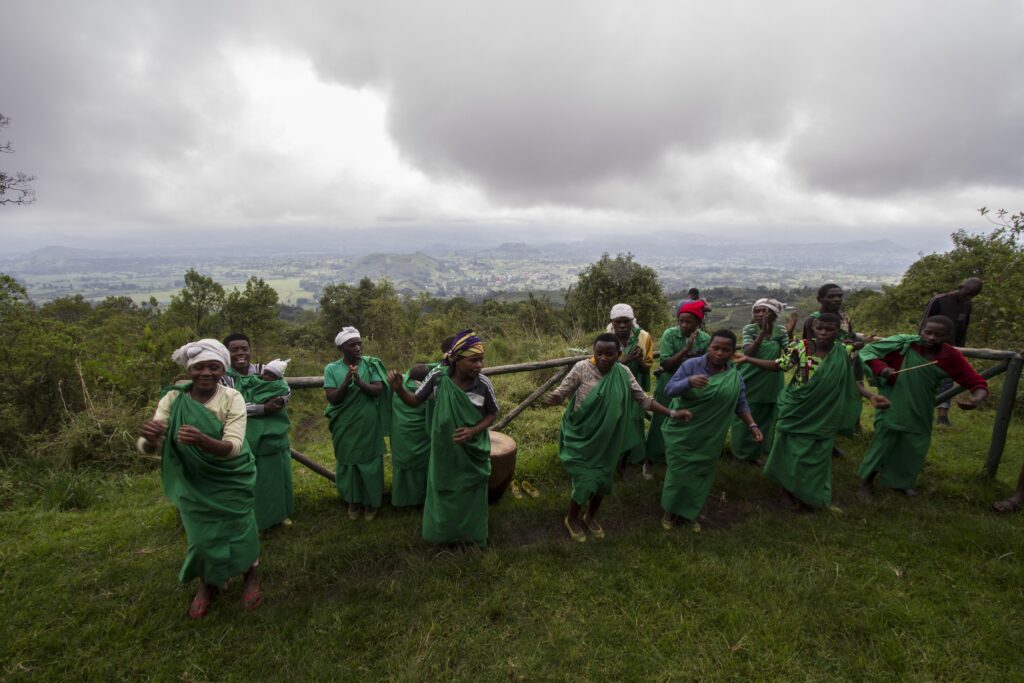
Unique Aerial Safaris
Sunrise hot air balloon flights over Queen Elizabeth and Murchison Falls National Parks reveal stunning wildlife panoramas, offering a spectacular bird’s-eye perspective of Uganda’s wilderness.
Best Time for Adventure Safaris in Uganda
The dry seasons, from June to September and December to February, are ideal for safaris in Uganda, offering clearer wildlife sightings as animals gather near water sources, better access to parks with firm roads and trails, optimal gorilla trekking conditions with less mud, enhanced photography opportunities under clear skies, and more comfortable camping with minimal rainfall.
However, some activities like white-water rafting in Jinja and birdwatching are excellent year-round. The low season (March–May, October–November) offers discounted permits and fewer crowds, making it a budget-friendly option for travelers willing to brave occasional showers.
White-water rafting and kayaking in Jinja deliver world-class adrenaline adventures on the Nile River, where thrill-seekers conquer Grade 5 rapids like “The Bad Place” while enjoying stunning scenery, professional safety standards, and the unique opportunity to raft at the legendary Source of the Nile, making it Africa’s premier water sports destination that combines extreme excitement with breathtaking natural beauty.
Why Do Adventure Safaris in Uganda Continue to Attract Growing Numbers of Tourists?
Uganda’s adventure safari sector has experienced a significant surge in tourist interest over recent years, a trend driven by the country’s unique combination of rare wildlife encounters, diverse landscapes, and authentic experiences. This growing popularity is not merely a result of global curiosity but a testament to the exceptional offerings that distinguish Uganda from more conventional safari destinations across Africa.
At the heart of Uganda’s allure is its unparalleled opportunity for close encounters with wildlife, particularly the endangered mountain gorillas. As one of only a few countries where these magnificent primates can be observed in the wild, Uganda offers a deeply moving and rare experience that resonates with conservation-minded travelers and nature enthusiasts alike. Trekking through misty rainforest to spend a precious hour with a gorilla family is not just an adventure; it’s a transformative encounter that few destinations on earth can rival. The country’s commitment to protecting these primates in their natural habitat adds a powerful ethical dimension to the safari experience, further enhancing its appeal.
Equally compelling is Uganda’s unmatched diversity of adventure experiences, which sets it apart from single-focus destinations. Within the space of a single itinerary, visitors can transition from tracking chimpanzees in a rainforest to observing tree-climbing lions on a savannah game drive to braving white-water rapids on the Nile. This seamless blending of different ecosystems and activities means that travelers don’t have to choose between primates, big game, or adrenaline; they can enjoy them all in one extraordinary trip, without ever crossing a border.
Adding to this richness is Uganda’s spectacular natural beauty, which serves as both a backdrop and a highlight of any safari. The country’s dramatic topography, ranging from the glacier-capped peaks of the Rwenzori Mountains to the rolling savannahs and lush crater lakes, offers an ever-changing canvas for exploration. Waterfalls thunder through tropical forests, rivers carve through gorges, and mist rises over valleys at dawn. For photographers and nature lovers, Uganda delivers visual rewards at every turn, making each moment in the wild a story worth capturing.
Another important factor behind the sector’s growth is Uganda’s exceptional value proposition. While offering world-class wildlife experiences, the country remains comparatively more affordable than some of its East African neighbors. Gorilla and chimpanzee trekking permits, though priced to support conservation, are often more accessible than those in other regions, and the range of accommodations, from budget-friendly eco-lodges to luxurious safari camps, ensures that adventure travel is available to a wide spectrum of visitors. This affordability does not come at the expense of quality; instead, it positions Uganda as a destination where authenticity and comfort coexist.
Lastly, the authentic and exclusive nature of Uganda’s safari experiences continues to charm visitors seeking something beyond the commercialized safari circuits. Many of its parks and reserves remain relatively uncrowded, preserving a sense of wilderness and intimacy that enhances the overall experience. Whether it’s spotting a herd of elephants in the golden morning light or listening to traditional stories beneath a starlit sky, Uganda offers encounters that feel personal, meaningful, and often spiritual. In these quieter, less-touristed areas, travelers are not just observers; they become part of a larger, living landscape.
Challenges Facing Adventure Safaris in Uganda
Despite the growing global appeal and substantial economic contributions of Uganda’s adventure tourism sector, several critical challenges threaten its long-term sustainability and potential for growth. These issues span environmental, infrastructural, and socioeconomic dimensions, underscoring the urgent need for comprehensive and inclusive conservation strategies.
One of the most pressing concerns is poaching and the decline of wildlife populations. Illegal hunting continues to threaten iconic species, particularly elephants, which have experienced notable population reductions in recent years. This not only endangers Uganda’s biodiversity but also diminishes the value of wildlife-based tourism experiences that draw thousands of visitors each year.
Closely linked to this is the issue of deforestation and habitat encroachment. Many of Uganda’s protected areas, including renowned sites like Bwindi Impenetrable Forest, are under increasing pressure from surrounding communities. As human populations grow, so does the demand for land, leading to agricultural expansion and settlement within or near these sensitive ecosystems. This encroachment disrupts wildlife corridors and threatens the ecological integrity essential for sustaining adventure safaris.
Inadequate tourism infrastructure further hampers the sector’s growth. While Uganda boasts stunning natural attractions, many national parks remain difficult to access due to poorly maintained roads and limited facilities. This not only deters potential visitors but also impacts the quality of the safari experience, particularly during the rainy seasons when some areas become nearly impassable.
Another barrier is the high cost of wildlife permits, especially for gorilla and chimpanzee trekking. While these experiences are among Uganda’s top tourism draws, the permit fees are often unaffordable for most Ugandans, creating a stark disparity in access to their natural heritage. This limits domestic tourism and risks alienating local communities from the conservation efforts that rely heavily on their support.
Lastly, climate change poses a growing and unpredictable threat. Rising temperatures and shifting rainfall patterns are already affecting Uganda’s ecosystems. In the Rwenzori Mountains, for instance, glaciers are visibly retreating, altering local hydrology and posing challenges for both wildlife and human communities. These environmental shifts may ultimately reduce the viability of some tourism activities, especially those dependent on consistent seasonal conditions.
Strategies Addressing the Challenges in Uganda’s Adventure Tourism Sector
In response to the growing challenges facing Uganda’s adventure tourism sector, a series of targeted initiatives have been rolled out to promote conservation, community inclusion, and sustainability.
Community tourism programs now ensure that a share of revenue from wildlife permits is reinvested into local infrastructure, such as schools and clinics, directly linking tourism to community well-being. This has fostered local support for conservation. At the same time, increased funding has strengthened anti-poaching efforts through ranger patrols, snare removal, and wildlife monitoring to protect endangered species.
Eco-friendly accommodation is also on the rise, with lodges adopting solar power, water recycling, and sustainable construction to reduce environmental impact. Reforestation projects, especially around Bwindi, are restoring vital wildlife corridors and strengthening gorilla habitats.
Visitor education is emphasized through mandatory briefings on responsible wildlife interaction, helping minimize human impact on delicate ecosystems. Moreover, alternative livelihood programs train former poachers and at-risk locals in sustainable trades like beekeeping and handicraft production, reducing dependence on harmful practices.
Collectively, these efforts are creating a more resilient and inclusive adventure tourism model that safeguards Uganda’s natural and cultural heritage for future generations.
Conclusion
Uganda’s adventure safaris offer a perfect blend of wildlife, adrenaline, and culture, making it a top choice for intrepid travelers. While challenges like poaching and infrastructure gaps persist, sustainable tourism efforts aim to protect this natural paradise. For those seeking gorilla encounters, thrilling rapids, and untouched wilderness, Uganda remains an unbeatable destination.



